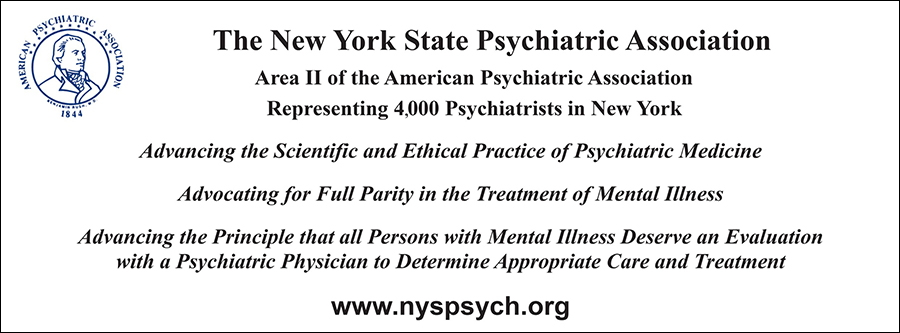People with opioid use disorder (OUD) have a high prevalence of a serious mental illness (SMI). Nearly 27% of people with an OUD had a co-occurring SMI (Jones and McCance-Katz 2019), which complicates care when access to dual diagnosis treatment is limited. Overdose deaths have steadily increased in the US, with over 100,000 deaths per year in the past two years (Ahmad et al. 2023). Of these, the majority is driven by synthetic opioids other than methadone, with over 70,500 overdose deaths in 2021. This accounts for almost 200 people a day. These deaths are not distributed equally. In 2021, American Indian and Alaska Natives experienced the highest mortality, followed by people who are Black (KFF 2023). Life-saving interventions such as medication assisted treatment (MAT) work. However, very few access care, and 87% of people with opioid use disorder do not receive evidence-based treatment (Krawczyk et al. 2022). Therefore, it is of utmost importance to provide services to keep our people alive until they are ready for change.

Alan T. Rodríguez Penney, MD
Harm reduction reduces the negative consequences associated with substance use. Interventions may include syringe service programs (SSPs), naloxone, fentanyl test strips, overdose prevention centers (also known as supervised injection sites), among others. SSPs have a strong evidence-base for decreasing the incidence of HIV and viral hepatitis infections and increasing the likelihood of abstinence. They are cost-effective, and don’t increase illegal drug use or crime (CDC 2023). Naloxone is an opioid antagonist that quickly reverses a life-threatening opioid overdose. It can be given intranasally or intramuscularly. States that enacted laws to increase access to naloxone saw a 14% decrease in opioid overdose deaths (NIDA 2017). Fentanyl test strips are a relatively new harm reduction intervention and scientific evidence is still being collected to determine their effectiveness (CDPH 2018). Overdose prevention center (OPC) programs, also known as a Supervised Injection Facility (SIF) or a Supervised Injection Site (SIS), allow people who inject drugs (PWID) to use in a supervised setting where staff can intervene if an overdose occurs.
OPCs are new in the United States, with the first center opening in New York City in November 2021. However, these programs have been well-established in other parts of the world. Unofficial OPCs have existed long before and it wasn’t until 1986 when Switzerland opened the first recognized OPC (EMCDDA 2004). There are now 120 OPCs operating across 10 countries (Samuels et al. 2022). Studies evaluating outcomes estimate these programs save lives and reduce medical care associated with overdoses (Armbrecht et al. 2021). The first OPC was established in the US by OnPoint NYC, which operates two sites. As of June 2023, they had over 78,000 engagements and intervened 845 times to address overdose symptoms. To date, there has never been an overdose death in an OPC. This harm reduction approach is safe and effective. However, other US cities have not been able to open OPCs due to legal barriers on the local and federal level.
The federal statute 21 USC § 856 of the Controlled Substances Act of 1986 (GovInfo 2023), also known as the “Crack House Statute”, deems it illegal for organizations to open a physical space and knowingly allow use of controlled substances. OPCs operate in a legal gray area that makes them vulnerable to legal challenges and prohibit federal funding. This has impeded cities wanting to open an OPC from doing so. Amending the Crack House Statute to include exemptions for organizations providing overdose prevention services would remove a significant barrier to providing life-saving treatment.
We need to keep our most vulnerable people, especially those with co-occurring SMI and OUD, alive and safe until they’re able to access treatment. This is a crucial aspect of providing care and it starts before our patients come into our office.
Alan T. Rodríguez Penney is a Public Psychiatrist working for Janian Medical Care. We provide compassionate medical and psychiatric care to people who are currently or formerly homeless. Alan can be reached at alan.rodriguez@janianmed.org.
References
Ahmad FB, Cisewski JA, Rossen LM, Sutton P. “Provisional drug overdose death counts.” National Center for Health Statistics. 2023 May 17. https://www.cdc.gov/nchs/nvss/vsrr/drug-overdose-data.htm#notes Accessed 11 June 2023.
Armbrecht E, Guzauskas G, Hansen R, Pandey R, Fazioli K, Chapman R, Pearson SD, Rind DM. “Supervised Injection Facilities and Other Supervised Consumption Sites: Effectiveness and Value; Final Evidence Report.” Institute for Clinical and Economic Review. 2021 Jan 8. https://icer.org/wp-content/uploads/2020/10/ICER_SIF_Final-Evidence-Report_010821.pdf Accessed 11 June 2023.
California Department of Public Health (CDPH). Fentanyl Testing to Prevent Overdose: Information for People Who Use Drugs and Healthcare Providers. 2018 Sep 28. https://www.cdph.ca.gov/Programs/CID/DOA/CDPH%20Document%20Library/Fact_Sheet_Fentanyl_Testing_Approved_ADA.pdf#search=fentanyl%20test%20strips Accessed 10 June 2023.
CDC. “Summary of Information on The Safety and Effectiveness of Syringe Services Programs (SSPs).” National Center for HIV, Viral Hepatitis, STD, and TB Prevention. 2023 Jan 11. https://www.cdc.gov/ssp/syringe-services-programs-summary.html Accessed 10 June 2023
European Monitoring Centre for Drugs and Drug Addiction (EMCDDA). “When, how and why did consumption rooms come into being?” European report on drug consumption rooms. 2004 Feb. https://web.archive.org/web/20200326022000/http://www.emcdda.europa.eu/attachements.cfm/att_2944_EN_consumption_rooms_report.pdf Accessed 11 June 2023.
GovInfo. “§ 856. Maintaining drug-involved premises.” Title 21- Food and Drugs. https://www.govinfo.gov/content/pkg/USCODE-2004-title21/pdf/USCODE-2004-title21-chap13-subchapI-partD-sec856.pdf Accessed 11 June 2023.
Jones CM, McCance-Katz EF. “Co-occurring substance use and mental disorders among adults with opioid use disorder.” Drug Alcohol Depend. 2019 Apr 1;197:78-82. https://www.sciencedirect.com/science/article/abs/pii/S0376871618305209 Accessed 10 June 2023.
KFF. “Opioid Overdose Deaths by Race/Ethnicity”. State Health Facts. https://www.kff.org/other/state-indicator/opioid-overdose-deaths-by-raceethnicity/?dataView=1&activeTab=graph¤tTimeframe=0&startTimeframe=3&selectedRows=%7B%22wrapups%22:%7B%22united-states%22:%7B%7D%7D%7D&sortModel=%7B%22colId%22:%22Location%22,%22sort%22:%22asc%22%7D#notes Accessed 11 June 2023.
Krawczyk N, Rivera BD, Jent V, Keyes KM, Jones CM, Cerdá M. “Has the treatment gap for opioid use disorder narrowed in the U.S.?: A yearly assessment from 2010 to 2019″.” Int J Drug Policy. 2022 Dec;110:103786. https://www.sciencedirect.com/science/article/pii/S0955395922002031?via%3Dihub Accessed 10 June 2023.
NIDA. “Naloxone for Opioid Overdose: Life-Saving Science.” National Institute on Drug Abuse. 30 Mar 2017. https://nida.nih.gov/publications/naloxone-opioid-overdose-life-saving-science. Accessed 11 June. 2023.
Samuels EA, Bailer DA, Yolken A. “Overdose Prevention Centers: An Essential Strategy to Address the Overdose Crisis.” JAMA Netw Open. 2022;5(7):e2222153. https://jamanetwork.com/journals/jamanetworkopen/fullarticle/2794326 Accessed 11 June 2023.







